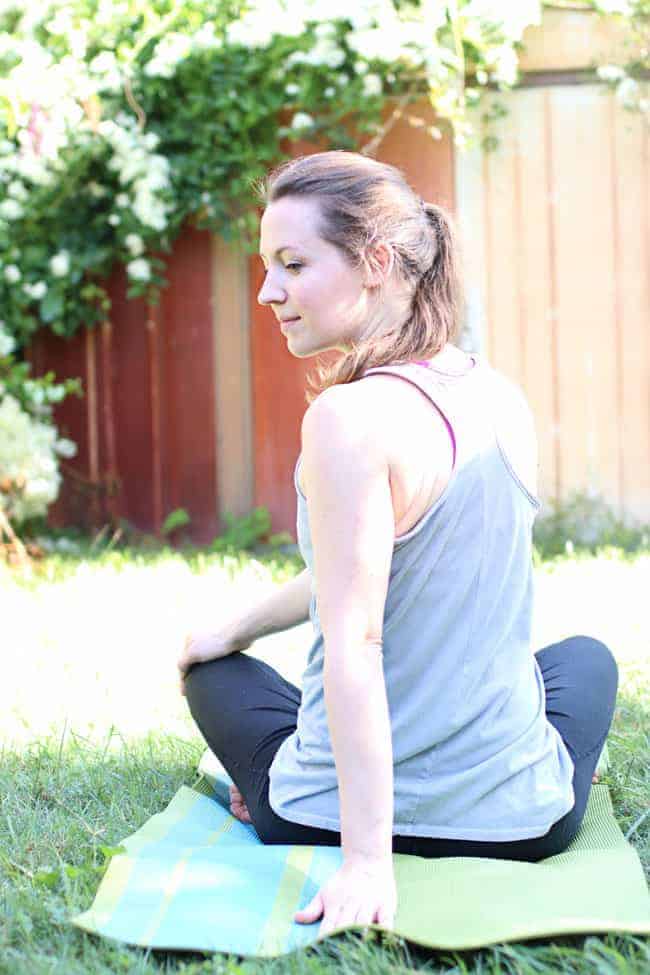While we all have the best of intentions to exercise regularly and stick with it, sometimes life gets in the way. Whether you take some time off due to injury, a hectic schedule, a long vacation, or just go through periods of not feeling it, you can get back into a good exercise groove. You just need to approach it the right way.
Diving into a complicated routine or high-intensity training is usually not the best route to take - especially if you were sidelined due to injury. If your time off was medically related (i.e. injury, illness, having a baby, a health scare etc.), it is critical that you get the green light from your doctor or physical therapist to begin participating in physical activity and a structured fitness routine again.

How to start working out after a break
Once you feel ready to get back into it, here are some helpful tips to help you start working out after taking time off.
Know Your Starting Point
In addition to being ready physically, it is also important to be ready mentally. Getting back into exercise after taking time off can create anxious feelings for some.
Thoughts such as “What if I can’t do what I used to do?” or “What if I look silly?” can be discouraging, but it is important to remember that getting fit is not a linear journey. Just because you could perform at a certain level at one point and no longer can, it does not mean the exercise no longer “counts.” Your body wants to move and will benefit from any movement - it’s just important to give it the type of movement it needs, and to give yourself grace in the meantime. Don't set crazy goals to lose weight quickly or build muscle rapidly. Just enjoy the workout.
If you are going to begin working out again safely and effectively, you have to be honest with yourself about where you are at. Trying to jump back into high-intensity exercise after taking a long period of time off can feel discouraging, and can be dangerous. Try not to get bogged down by what you used to be able to do. Your body changes every single day, and it is important to honor where you’re at in this point in time.
Begin Incorporating Low-Impact Movement
If you’re unsure what exercises you should start with, I recommend putting one foot in front of the other. That’s right, I’m talking about walking. A fitness tracker can help keep you motivated.
Walking is by far one of the most beneficial, highly functional exercises you can do, yet it is incredibly underrated. While walking doesn’t provide the intense calorie burn that sexier, high-intensity workouts do, walking is an approachable way to help your body get re-acclimated to movement. In addition to being a great source of cardio, regular routine of walking may help boost immune function, ease joint pain, and even help reduce cravings for sweets.
Here is a simple five-day routine you could follow to get back in the swing of things:
Day 1 - Moderate/Brisk Walk for 30 Minutes
Day 2 - Perform the following:
- Two Sets of 10 Bodyweight Squats to a bench or chair
- Two sets of 10 Modified Push-ups (on knees or against a wall)
- 15 seconds of Plank (or modified plank) followed by three seconds of rest for three total rounds
- Follow this routine up with a 15 minute moderate or brisk walk.
Day 3 - Rest
Day 4 - Moderate/Brisk Walk for 20 Minutes Followed by 10 Minutes of Stretching
Day 5 - Perform the following:
- Two Sets of 10 Bodyweight Squats to a bench or chair
- Two sets of 10 Modified Push-ups (on knees or against a wall)
- 15 seconds of Plank (or modified plank) followed by three seconds of rest for three total rounds
- Follow this routine up with a 15 minute moderate or brisk walk.
Gradually Keep Building
Once you have been able to incorporate low-impact movement into your day for two or more weeks and are feeling good, it might be time to gradually keep building and performing movement that feels good to your body. Maybe that means you start attempting push-ups with one knee on the ground instead of both. Maybe that means you start incorporating a yoga class or lifting light weights. Continue assessing how your mind and body are feeling and take things one day at a time.
Frequently Asked Questions
What is a routine?
A workout routine is a set of exercises and activities that you do regularly to improve your physical fitness and overall health. Your routine can last anywhere from just a few minutes to up to 60 minutes or more, depending on your fitness level, goals, and availability.
What is a workout class?
A class is a group fitness session led by a certified instructor that can be focused on a variety of exercises such as strength training, cardio, or yoga.
How can you get back into working out?
To get back into working out, it's important to start with small, achievable goals, gradually increase the intensity and duration of your workouts, and establish a regular exercise routine that works for you. A regular workout routine can help you maintain or improve your physical fitness, reduce the risk of chronic diseases, and enhance your overall health and wellbeing. It may help to start your day with working out, even if you aren't a morning person. That way, you will start completing your routine at the beginning of the day before distractions set in.
What are some healthy habits that can support your workout routine?
Eating a balanced diet, staying hydrated, getting enough sleep, and managing stress are all healthy habits that can support your workout routine and enhance your overall health. Good workout gear can help you feel more comfortable, safe, and motivated during your workouts.
How long does it take to get back into a workout routine?
It can take anywhere from a few days to a few weeks to get back into a workout routine, depending on your fitness level, goals, and consistency.
How many minutes of physical activity should you aim for each day?
It is recommended to aim for at least 30 minutes of physical activity per day to maintain good health and fitness.
403




